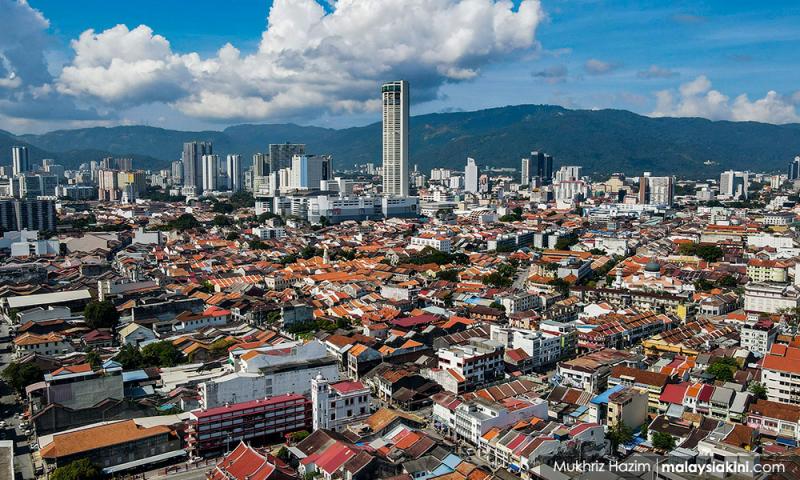LETTER | Penang, Malaysia’s Silicon Valley, has firmly cemented itself as the cornerstone of the nation’s electronics and semiconductor industry.
Contributing over 58 percent of the country’s total electronics exports and employing more than 100,000 skilled workers, this tiny island state is punching well above its weight.
But as we bask in Penang’s accolades, a bigger question looms: Can this growth be sustained? Or are we ignoring bottlenecks that threaten the very foundation of Penang’s semiconductor dominance?
The bright spot in Malaysia’s GDP
Dubbed the “Silicon Island”, Penang contributes nearly 6.8 percent of Malaysia’s GDP, a remarkable feat considering its size.
Its ecosystem is a haven for global semiconductor giants like Intel, AMD, and Broadcom, supported by a robust local supply chain. With global demand for semiconductors surging, Penang has a golden opportunity to solidify its position as a global hub.
However, this golden era is now overshadowed by external geopolitical forces. The return of Donald Trump as US president in January 2025 brought about a resurgence of protectionist policies.
Tariffs on semiconductor-related exports, sanctions on countries with trade ties to China, and an overall tightening of global supply chains have heightened uncertainties for Penang’s semiconductor industry.
Provocative thought: Is Penang’s economic success driving national growth, or is Malaysia overly reliant on a single region vulnerable to external shocks?
Talent wars: Can we keep up?
The semiconductor industry is driven by innovation, and innovation demands talent. Penang’s talent pool is growing, but is it growing fast enough?
With the industry requiring more than 20,000 engineers and skilled workers annually, Penang faces stiff competition from regional hubs like Singapore and Taiwan. Despite efforts to attract foreign talent and retain local graduates, the brain drain persists.
Adding to the pressure is the US Chips Act and other regional initiatives aimed at building domestic semiconductor capabilities, which are intensifying the global talent war.
Companies operating in Penang now face higher costs to attract and retain talent while also dealing with poaching by competitors.
Food for thought: If talent is the lifeblood of the semiconductor industry, what happens when the pipeline runs dry?
Infrastructure: A silent crisis
Penang’s infrastructure is a double-edged sword. While the Bayan Lepas Free Industrial Zone is a testament to its industrial success, the state’s roads, ports, and utilities are struggling to keep pace with rising demand.
Logistical bottlenecks at Penang Port, power supply reliability issues, and limited land for industrial expansion are red flags.
The global sanctions imposed by the US under Trump’s renewed leadership further exacerbate these issues. Companies reliant on imported machinery and raw materials are now navigating longer lead times, higher transportation costs, and trade restrictions.
Critical question: Are we investing enough in infrastructure to match Penang’s industrial ambitions, or are external pressures further limiting our options?
Regional competitiveness: A double-edged sword
Penang’s rise has drawn the attention of global investors, but this also invites competition. Countries like Vietnam and Indonesia are ramping up efforts to attract the same semiconductor players, offering lower labour costs and favourable tax incentives.
Compounding the challenge, the global tariff wars initiated under the Trump administration have tilted the playing field. Multinational companies are reevaluating their supply chain strategies, with many shifting production to countries outside the tariff zone.
While Penang’s ecosystem and skilled workforce remain key advantages, the rising cost of doing business could erode these benefits.
Provocative thought: Can Penang maintain its competitive edge without falling into the trap of over-reliance on semiconductors, especially under mounting external pressures?
A blueprint for sustainable growth
Penang’s semiconductor industry is a national asset, but its future hinges on proactive strategies.
Expand talent development initiatives: Strengthen partnerships between universities, the government, and industry players to create a sustainable talent pipeline. Bolster reskilling programmes to adapt to evolving global demands.
Invest in Infrastructure: Develop new industrial zones, upgrade ports, and ensure a reliable power grid to support future expansion. Build resilience to external supply chain disruptions by promoting local suppliers.
Diversify the economy: Reduce over-reliance on semiconductors by fostering growth in adjacent industries like artificial intelligence, robotics, and renewable energy. Leverage Malaysia’s position within the Asean region to tap into new markets.
Mitigate geopolitical risks: Advocate for trade policies that balance Malaysia’s economic interests with global pressures. Strengthen ties with non-aligned markets to hedge against sanctions and tariffs.
The bottom line
Penang’s success in the semiconductor industry is a source of national pride, but it is not without its challenges.
The re-emergence of protectionist policies, global tariff wars, and stiff regional competition are formidable obstacles. Addressing talent shortages, infrastructure bottlenecks, and geopolitical risks will determine whether Penang continues to thrive or risks losing its edge.
Final thought: Is Penang’s semiconductor success a model for Malaysia’s future, or a cautionary tale of over-dependence in an increasingly volatile world?
The views expressed here are those of the author/contributor and do not necessarily represent the views of Malaysiakini.





